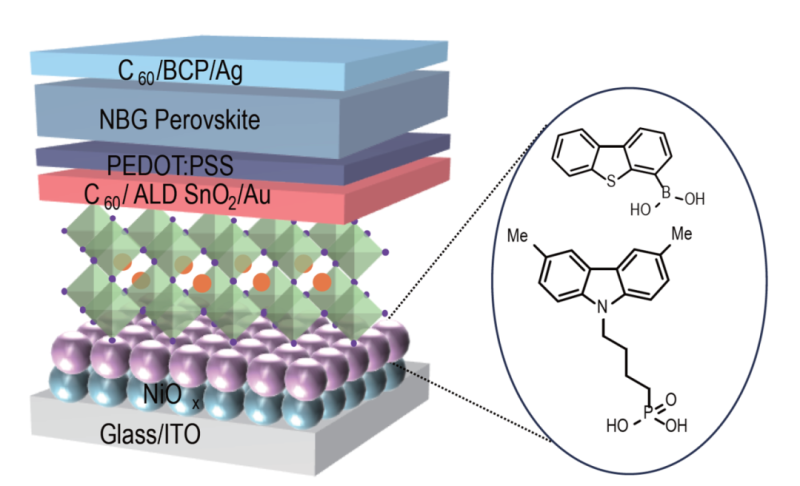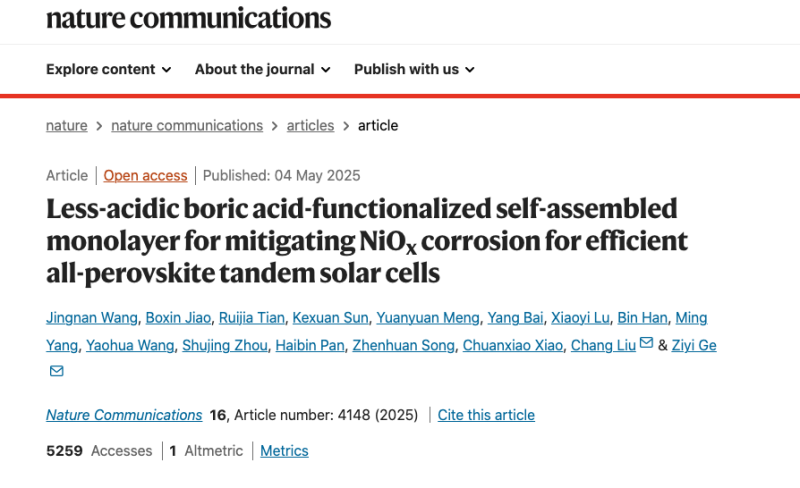A research group led by Prof. GE Ziyi from the Ningbo Institute of Materials Technology and Engineering (NIMTE) of the Chinese Academy of Sciences (CAS) has developed an innovative strategy to alleviate NiOx corrosion, enabling more efficient and stable all-perovskite tandem solar cells.The study was published in Nature Communications.
Perovskite material efficiently converts sunlight into electricity, making it a promising candidate for tandem solar cells. In all-perovskite tandem solar cells, a wide-bandgap top cell captures high-energy photons, while a narrow-bandgap bottom cell absorbs lower-energy wavelengths. This exquisite design optimizes solar spectrum utilization, significantly boosting overall efficiency.
However, the strongly acidic phosphoric acid (PA) anchors in self-assembled monolayers (SAMs) would corrode NiOx. This interaction in wide-bandgap top cells degrades device performance in both efficiency and stability.
To address this issue, researchers at NIMTE employed less-acidic boric acid (BA) as a milder anchoring group to construct BA-SAMs. Via strong coordination between -BO2- and Ni, these BA-SAMs form robust interfacial bonds with the NiOx surface, which exhibits higher binding energy than conventional PA-SAMs.
This enhanced interaction also facilitates uniform SAM distribution, effectively preventing molecular aggregation on the NiOx surface, said GE.
With these innovations, the team fabricated a wide-bandgap cell with an improved power conversion efficiency (PCE) of 20.1%. When integrated with a narrow bandgap bottom subcell, this wide-bandgap subcell forms a tandem architecture that delivers an impressive PCE of 28.5%.
After 500 hours under 1 sun illumination, the device retained 90% of its initial efficiency, demonstrating exceptional long-term stability.
This achievement paves the way for developing high-performance tandem solar cells, advancing the commercial application of advanced photovoltaic technology.

Fig.1 The device architecture of the developed all-perovskite tandem solar cells (Image by NIMTE)






 Lu public network security: 37140202000173
Lu public network security: 37140202000173



